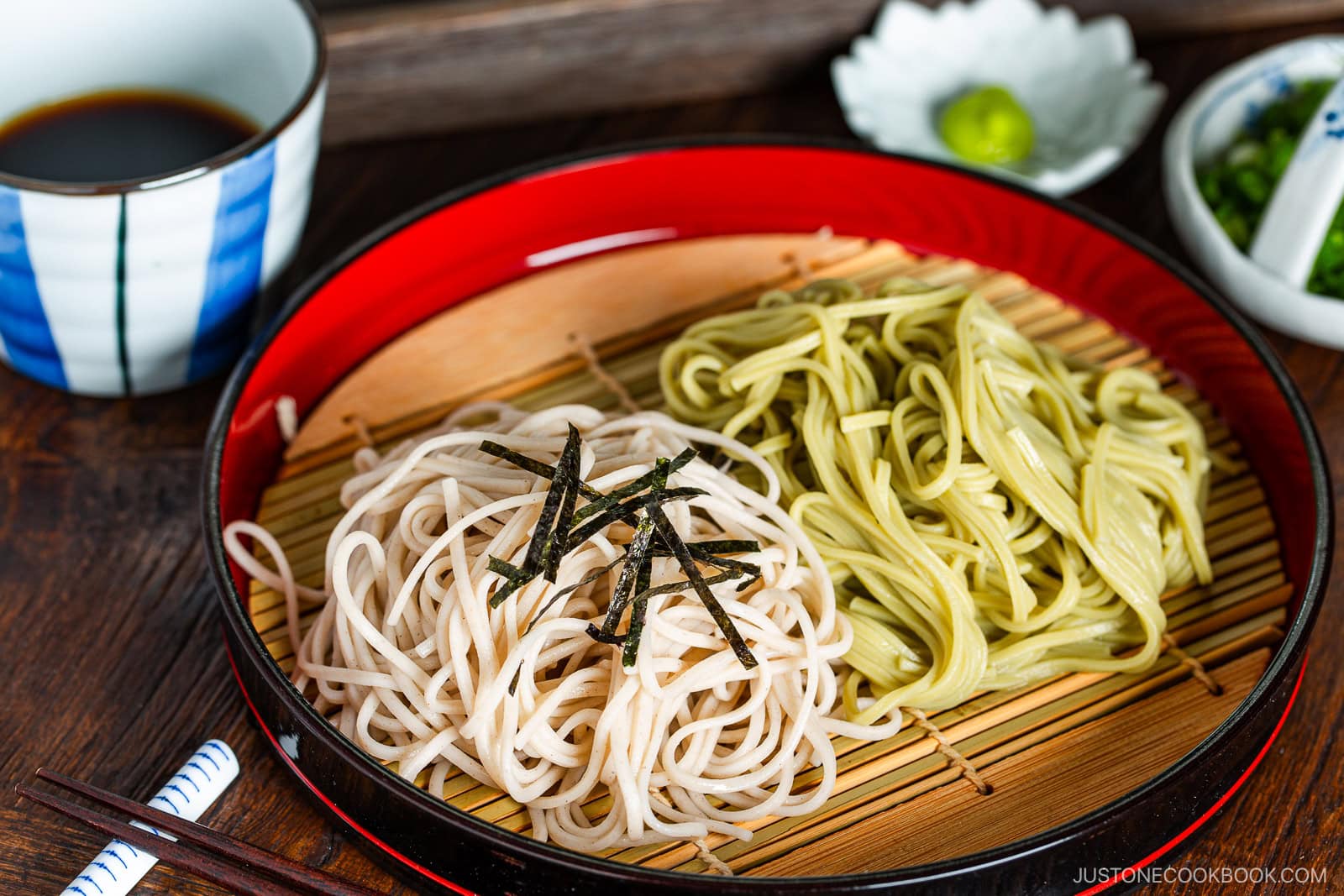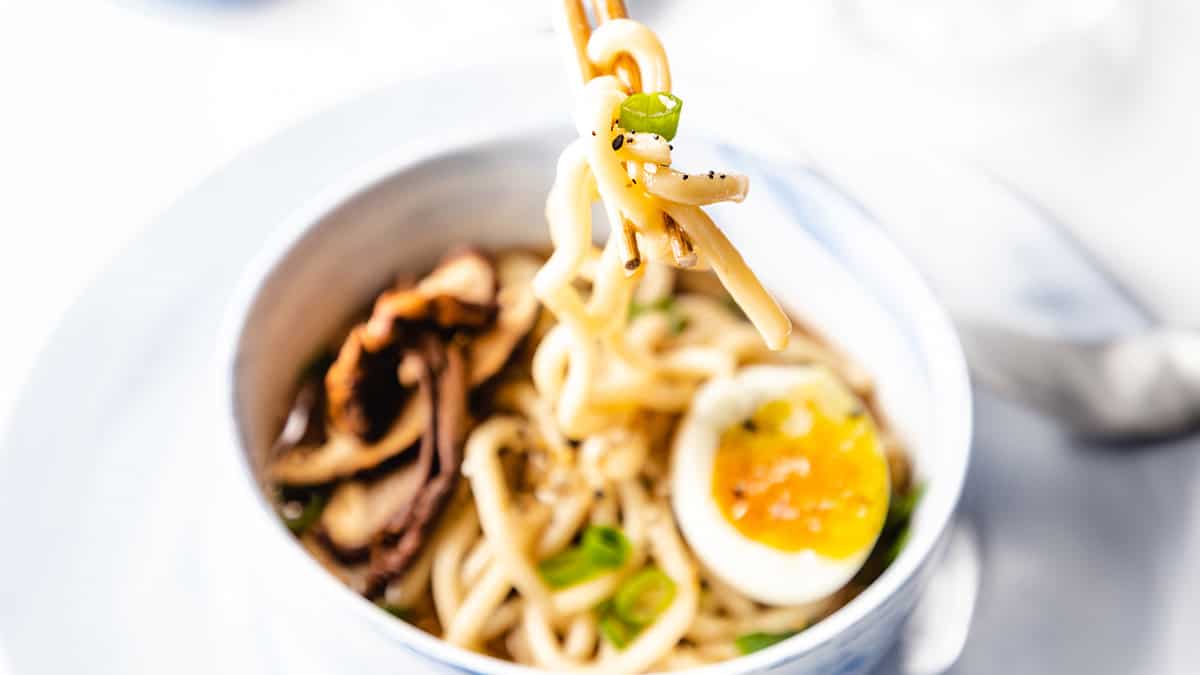Japanese milk pudding, known as “miruku purin” (ミルクプリン), is a Japanese dessert you can make at home with just 3 simple every-day ingredients and no oven! This sweet treat has a sweet milky taste and a jiggly and creamy texture – somewhere between a panna cotta and a jelly. It’s often served chilled and topped with fruit, syrup, or a dusting of matcha, making it a perfect dessert for warm days or when you want something elegant but easy to prepare!

What is Japanese Milk Pudding
Japanese milk pudding is a simple yet elegant dessert made from just milk, sugar, and gelatin. It has a subtle sweetness and milky richness with a light and jiggly jelly-like texture. Unlike other types of pudding which use eggs or egg yolks, this pudding uses gelatin or agar-agar so it’s texture is quite different from classic Japanese custard pudding (purin). Also unlike other puddings, this recipe doesn’t require any baking so it’s very easy to prepare.

The subtle flavor of the dessert makes it very easy to pair with whatever toppings you like! Typical additions include fruits like canned mandarin, syrups, fruit jams, caramel, and matcha. It’s the perfect quick, easy, and fuss-free dessert which uses pantry staples so everyone can make it. It’s simple but can be a delicate and elegant single-serve treat for dinner guests or a light summer snack!
Ingredients Required to Make Japanese Milk Pudding
Here are the simple ingredients needed to make Japanese milk pudding:
Milk
This is the base of the pudding. Whole milk is preferred for richness, but you can use low-fat milk, coconut milk, or some other plant-based milk.
Sugar
to add a subtle sweetness to balance the milky flavor. Regular granulated sugar works best, but you can adjust the amount to taste.
Gelatin
this is what sets the pudding. Use unflavored gelatin powder or gelatin sheets, dissolved in water, to give the pudding its jiggly texture—firmer than custard but softer than jelly.

Optional Toppings
Fresh fruit, caramel sauce, berry compote, or even a sprinkle of kinako (roasted soybean flour) or matcha powder can elevate the presentation and flavor. You can also cinnamon or vanilla into the mixture too.
Ingredients Substitutions
Milk : for a dairy-free or vegan version, use soy milk, coconut milk, almond milk or oat milk. But plant-based milks and low-fat milk may result in a lighter and less creamy pudding.
Sugar : you can use natural sweeteners such as honey or maple syrup. Reduce the liquid in the recipe slightly to compensate. You can also use stevia or monk fruit sweetener for a low-calorie or sugar-free option. Use according to the product’s sweetness ratio.
Gelatin : agar-agar powder is a vegan alternative derived from seaweed. It sets firmer than gelatin, so use about 1/3 the amount and simmer it well to activate. You can also use Kanten (Japanese agar), traditional in Japan; which is also plant-based, but this also creates a firmer, pudding. Milk pudding using kanten are specifically called “Milk Kanten” in Japan.
Step by Step Instructions for Japanese Milk Pudding
1 Bloom the Gelatin
- In a small bowl, add 1½ teaspoons of gelatin powder to 2 tablespoons of cold water.
- Let it sit for 5–10 minutes to fully bloom (absorb the water and soften).

2. Heat the Milk and Sugar
- In a small saucepan, combine milk and sugar.
- Heat on the stove over medium-low heat, stirring gently until the sugar fully dissolves.
- Do not let the milk boil—just heat until it’s warm and steamy.

3. Add the Gelatin
- Once the milk is warm and the sugar has dissolved, remove from heat.
- Stir in the bloomed gelatin until it melts completely into the milk.
4. Add Flavoring (Optional)
- Stir in 1 tsp vanilla extract or any other desired flavorings.
5. Strain the Mixture (Optional but Recommended)
- Pour the mixture through a fine mesh strainer to get a silky-smooth texture.
6. Pour into Molds
- Carefully pour the mixture into small serving cups, glasses, or ramekins.

7. Chill Until Set
- Let the puddings cool to room temperature, then cover with plastic wrap and leave in the fridge for at least 2–4 hours, or until fully set.
8. Serve
- Serve chilled. Enjoy as is, or top with fresh fruit, berry compote, caramel sauce, or a dusting of matcha.

- Bloom the Gelatin Properly : Always bloom gelatin in cold water before adding it to warm milk. This will make sure that it dissolves evenly and sets correctly.
- Don’t Boil the Milk : Heat the milk gently until warm (steamy but not bubbling). Boiling can affect the texture.
- Strain Before Pouring : Pour the mixture through a fine mesh sieve to remove any undissolved gelatin or bubbles for a silky-smooth texture.
Variations for Japanese Milk Pudding
Here are some delicious and creative recipe variations of Japanese milk pudding to try:
Matcha Milk Pudding
Add 1–2 teaspoons of sifted matcha powder to the milk while heating. Whisk well to dissolve and enjoy a slightly earthy twist to the milky pudding. This will go great with sweet red bean paste or whipped cream.
Chocolate Milk Pudding
Melt 2–3 tablespoons of dark or milk chocolate into the warm milk, stirring until smooth. You can also instead add a bit of cocoa powder.
Strawberry Milk Pudding
Blend fresh or frozen strawberries into a purée and mix with the warm milk and sugar. Top it with extra fresh berries once set!
Sakura Milk Pudding
For a cute springtime touch, add a few drops of sakura (cherry blossom) essence or syrup and garnish with pickled sakura flowers.
Miso Caramel Milk Pudding
Stir in a swirl of homemade miso caramel sauce to the milk mixture, or drizzle on top before serving for a rich, miso buttery flavor.

Serving Suggestions for Japanese Milk Pudding
Serve in Glass Cups or Jars : Use individual transparent cups or mini jars to show off the pudding’s silky texture. This makes it the perfect single-serving dessert.
Top with Fresh Fruit : Add sliced strawberries, blueberries, kiwi, or mango for a pop of color and natural sweetness. This milk pudding is also often made with canned mandarins in Japan.
Layer with Whipped Cream or Ice Cream : Top with a dollop of freshly whipped cream or ice cream for added indulgence.
Add Chocolate Shavings or Sauce : For a decadent twist, garnish with dark chocolate shavings or a drizzle of chocolate syrup.
Serve with Japanese tea : Serve Japanese milk pudding with a warm cup of hojicha for a toasty contrast. It will also go well with mugicha (barley tea) for a light, refreshing balance. Matcha has an earthy note that complements the pudding’s sweetness. All make perfect tea pairings for this delicate dessert.
FAQ
Q : What’s the difference between purin and milk pudding?
A : Purin is typically made with milk, sugar, and eggs, which thicken the mixture when gently heated. This gives purin a rich and creamy texture due to the coagulation of egg proteins.
Milk pudding, on the other hand, is made with milk, sugar, and gelatin or agar, not eggs. This creates a lighter and more jelly-like texture. Milk pudding also has subtle, more neutral flavor, making it a great base for a variety of toppings and flavors.
Soft, sweet, and jiggly Japanese milk pudding is an easy no-bake dessert recipe made with a few simple ingredients!
Prep Time 10 minutes
Cook Time 5 minutes
Total Time 4 hours 15 minutes
Servings: 4
- ▢ 5 g gelatin powder *1
- ▢ 50 ml water
- ▢ 250 ml milk
- ▢ 2 tbsp sugar
In a small bowl, add 5g of gelatin powder to 50ml of cold water.
Let it sit for 5–10 minutes to fully bloom (absorb the water and soften).
In a small saucepan, combine milk and sugar.
Heat over medium-low heat, stirring gently until the sugar fully dissolves. Do not let the milk boil—just heat until it’s warm and steamy.
Once the milk is warm and the sugar has dissolved, remove it from the heat.
Stir in the bloomed gelatin until it melts completely into the milk.
Pour the mixture through a fine mesh strainer to ensure a silky-smooth texture and into small serving cups, glasses, or ramekins.
Let the puddings cool to room temperature, then cover and refrigerate for at least 2–4 hours, or until fully set.
Serve chilled. Enjoy as is, or top with fresh fruit, berry compote, caramel sauce, or a dusting of matcha.
*1 follow the directions of your packet.
Calories: 66kcal · Carbohydrates: 9g · Protein: 3g · Fat: 2g · Saturated Fat: 1g · Polyunsaturated Fat: 0.1g · Monounsaturated Fat: 0.4g · Cholesterol: 8mg · Sodium: 28mg · Potassium: 97mg · Sugar: 9g · Vitamin A: 104IU · Calcium: 80mg · Iron: 0.02mg
Course: Dessert
Cuisine: Japanese
I want to see it! Tag @chopstickchronicles on social media!
The site and our mobile application may contain links to affiliate websites. We receive a small affiliate commission for any purchase made by you on the affiliate website using such links. Read our disclosure policy.











 English (US) ·
English (US) ·